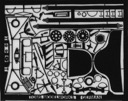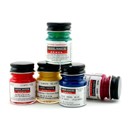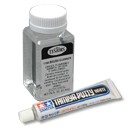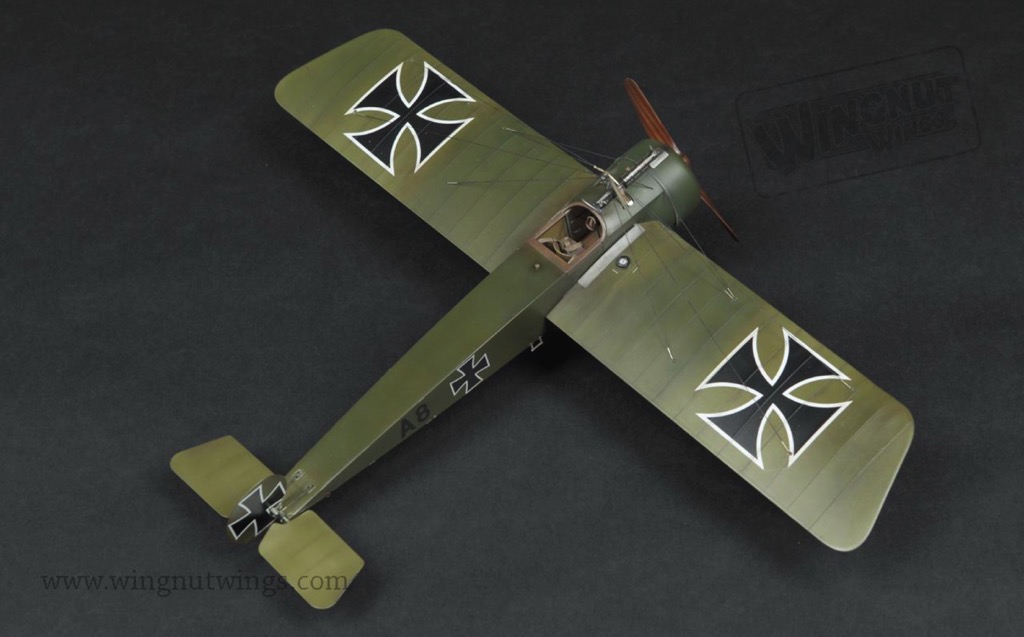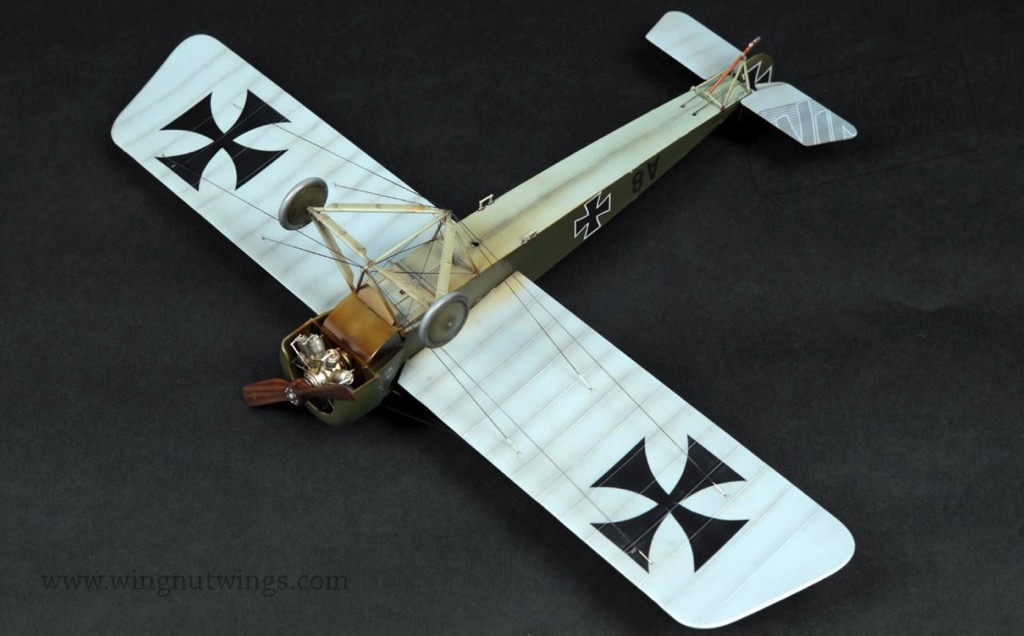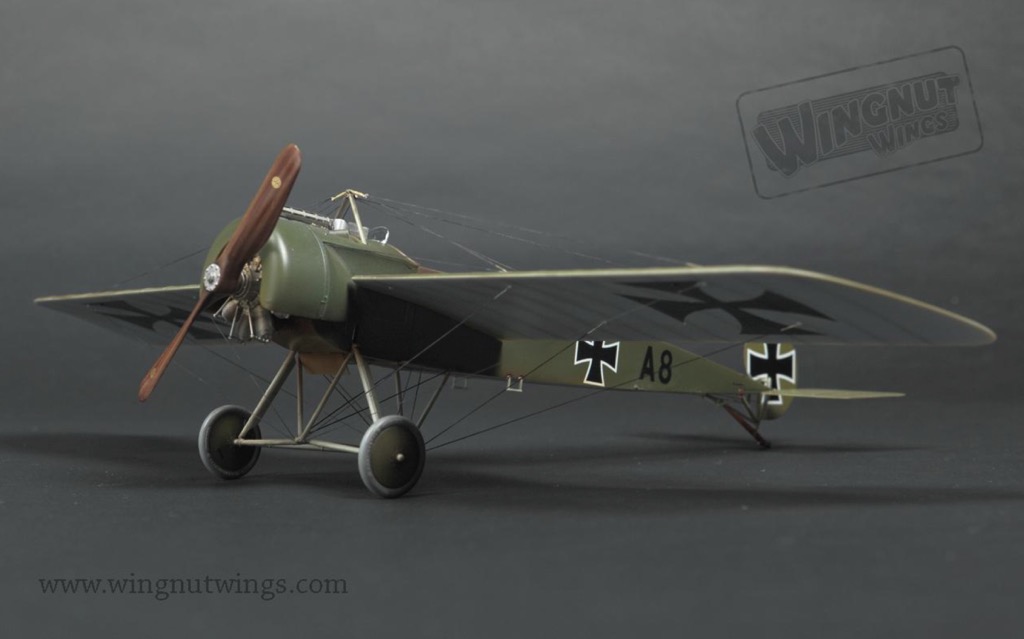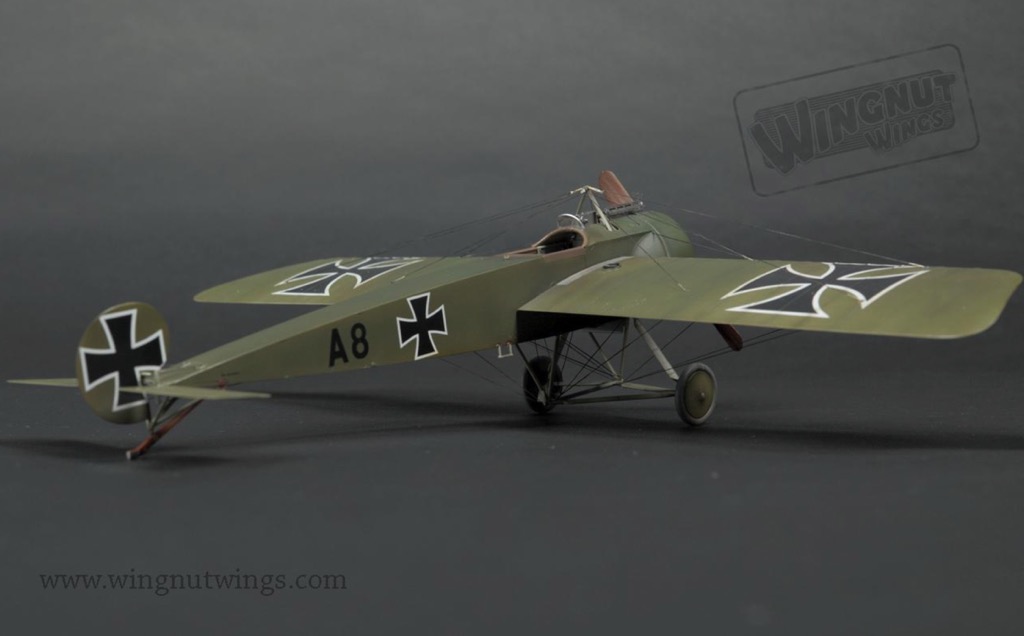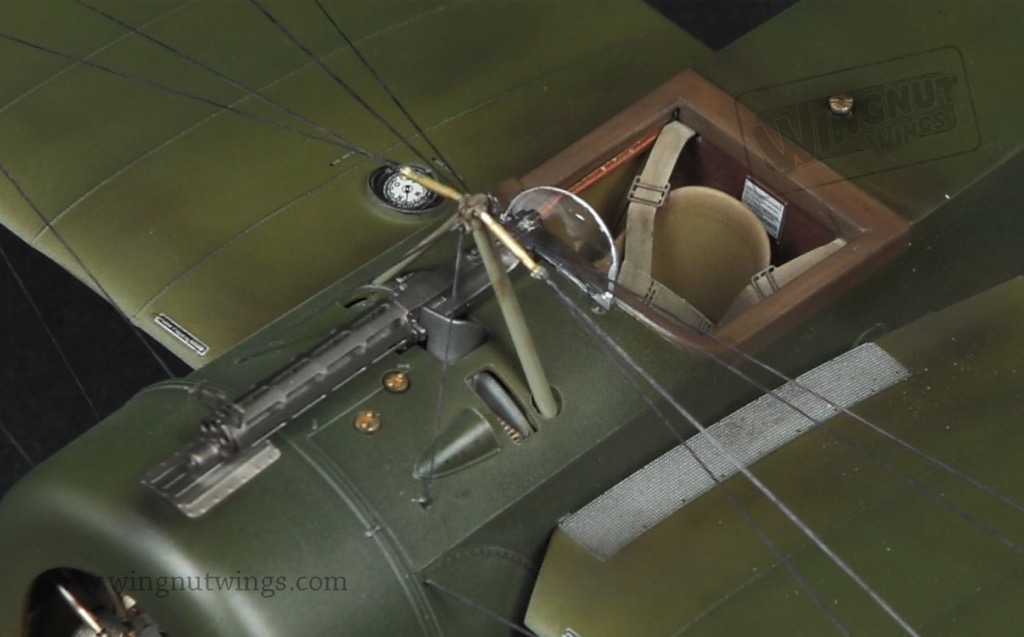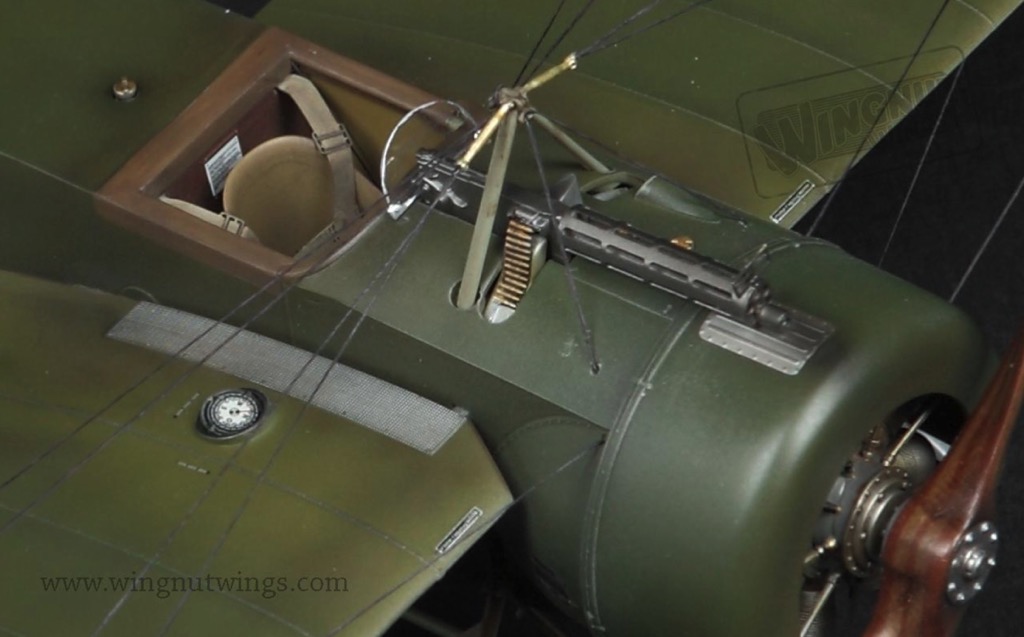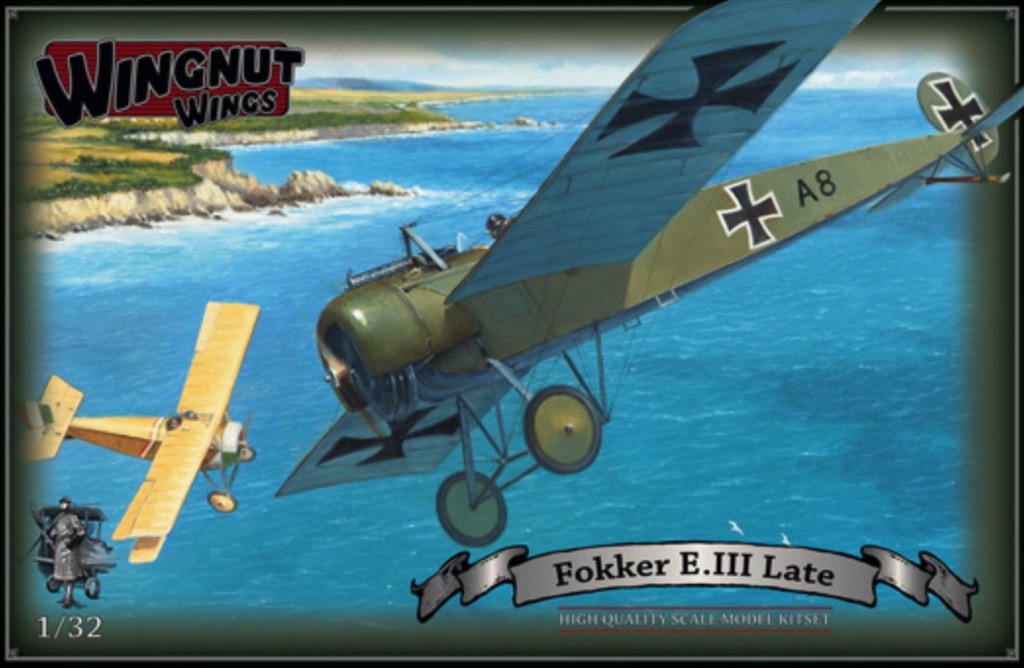

Fokker E.III - Late
Unassembled plastic model kit with photo-etch parts.
Don't forget building supplies!
DISCONTINUED This product has been discontinued
and is no longer available.$79.99
(All prices in U.S. Dollars)
Manufacturer: Wingnut Wings
Stock Number: WNW 32048
Scale: 1/32
View all products of type "Fokker Eindecker"
and is no longer available.$79.99
(All prices in U.S. Dollars)
Manufacturer: Wingnut Wings
Stock Number: WNW 32048
Scale: 1/32
View all products of type "Fokker Eindecker"
This model kit requires assembly. Cement, paint and other construction materials not included unless specifically stated in the description.
Features:
Fokker's unarmed 80hp and 100hp reconnaissance A type Eindeckers (inspired by a successful pre-war wing warping Morane-Saulnier design but with a welded steel tube frame fuselage) provided the airframe for further development and E.1 (armed Eindecker 80hp) types started shipping to front line units in June 1915. Although initially armed with a Parabellum LMG 14, which proved less that satisfactory, very soon into production they were fitted with the lMG 08 'Spandau'. The 100hp Oberursel U.1 (license built 100hp Gnome Monosoupape) powered E.II was developed concurrently with the E.1 and started entering service in July 1915. The E.III (externally identical to late production E.II) followed in August 1915 and from about October updated E.III started appearing with internal ammunition storage and a wing mounted compass. The 160hp Oberursel U.III powered Fokker E.IV, initially fitted with 3 lMG 08 machine guns (which proved to be 1 gun to many) first appeared in September 1915 but did not arrive at the front in larger numbers until March-April 1916. By this time the appearance of the highly maneuverable French Nieuport 11 and British DH.2 had marked the beginning of the end of the "Fokker scourge", effectively rendering the wing warping German monoplanes obsolete. Most Eindeckers had been withdrawn from front line service by December 1916.
Considerable confusion exists about these important aircraft (in no small part because of incorrect or conflicting Idflieg and Fokker factory records). Because of this we highly recommend you treat published drawings & specifications with a great deal of skepticism. We feel that Josef Scott's new Windsock Datafile Fokker Eindecker Compendiums published in September 2012 will go a long way towards clearing up much of this confusion.
It appears that Fokker Eindecker steel tube framework and fittings were painted in grey-green while all aluminium panels and cowls remained unpainted and were given a 'squiggly turned' finish. Despite conventional wisdom, photographic evidence indicates that no Fokker Eindeckers were factory finished in Clear Doped Linen (CDL). Contemporary allied combat reports record Fokker Eindecker colours such as "dark brown", "dark brown wings on the upper side", "grey", "straw yellow", "white", "black" and "butcher blue". A French report mentions that "the fabric of the Fokker wings was generally beige in 1916" while capture reports of later production E.III 196/16 and E.III 210/16 simply mention "beige". It is possible that "beige" and "straw yellow" are actually same colour and "white" and "black" may refer to misidentified Pfalz Eindeckers. It would appear that the linen covering was dyed, possibly before being fitted to the aircraft, or colour doped after being attached but before being finished with clear shrinking dope and varnish. Most Fokker Eindeckers exhibit heavy caster oil staining along their fuselages which soaked through the fabric from the inside, considerably darkening the coloured fabric.
- Late production Fokker E.III with internal ammunition stowage and updated cockpit coaming
- High quality Cartograf decal sheet for 6 aircraft
- 132 high quality injection moulded plastic parts
- 14 photo-etched metal detail parts
- Highly detailed 18 part Oberursel U.1 engine
- Optional lMG 08 "Spandau" & Austrian Schwarzlose M 16 machine guns, photo-etched lMG 08 "Spandau" cooling jackets, propellers and anemometer
- Fine in scale rib tape detail
- Full rigging diagrams
Fokker's unarmed 80hp and 100hp reconnaissance A type Eindeckers (inspired by a successful pre-war wing warping Morane-Saulnier design but with a welded steel tube frame fuselage) provided the airframe for further development and E.1 (armed Eindecker 80hp) types started shipping to front line units in June 1915. Although initially armed with a Parabellum LMG 14, which proved less that satisfactory, very soon into production they were fitted with the lMG 08 'Spandau'. The 100hp Oberursel U.1 (license built 100hp Gnome Monosoupape) powered E.II was developed concurrently with the E.1 and started entering service in July 1915. The E.III (externally identical to late production E.II) followed in August 1915 and from about October updated E.III started appearing with internal ammunition storage and a wing mounted compass. The 160hp Oberursel U.III powered Fokker E.IV, initially fitted with 3 lMG 08 machine guns (which proved to be 1 gun to many) first appeared in September 1915 but did not arrive at the front in larger numbers until March-April 1916. By this time the appearance of the highly maneuverable French Nieuport 11 and British DH.2 had marked the beginning of the end of the "Fokker scourge", effectively rendering the wing warping German monoplanes obsolete. Most Eindeckers had been withdrawn from front line service by December 1916.
Considerable confusion exists about these important aircraft (in no small part because of incorrect or conflicting Idflieg and Fokker factory records). Because of this we highly recommend you treat published drawings & specifications with a great deal of skepticism. We feel that Josef Scott's new Windsock Datafile Fokker Eindecker Compendiums published in September 2012 will go a long way towards clearing up much of this confusion.
It appears that Fokker Eindecker steel tube framework and fittings were painted in grey-green while all aluminium panels and cowls remained unpainted and were given a 'squiggly turned' finish. Despite conventional wisdom, photographic evidence indicates that no Fokker Eindeckers were factory finished in Clear Doped Linen (CDL). Contemporary allied combat reports record Fokker Eindecker colours such as "dark brown", "dark brown wings on the upper side", "grey", "straw yellow", "white", "black" and "butcher blue". A French report mentions that "the fabric of the Fokker wings was generally beige in 1916" while capture reports of later production E.III 196/16 and E.III 210/16 simply mention "beige". It is possible that "beige" and "straw yellow" are actually same colour and "white" and "black" may refer to misidentified Pfalz Eindeckers. It would appear that the linen covering was dyed, possibly before being fitted to the aircraft, or colour doped after being attached but before being finished with clear shrinking dope and varnish. Most Fokker Eindeckers exhibit heavy caster oil staining along their fuselages which soaked through the fabric from the inside, considerably darkening the coloured fabric.

Copyright © 2005-2024 Scale Hobbyist, all rights reserved















